Stoke-on-Trent
Explore hidden histories, historic photos, and things you never knew about Stoke-on-Trent from the collections and archives of Historic England.
Discover your local listed buildings and places
Introducing some of Stoke-on-Trent's most historic sites, included in the National Heritage List for England. Some of these captions have been summarised by AI. Click through for the official List entry. Skip this section and go to place by numbers
Chatterley Whitfield Colliery
Stoke-on-Trent
The monument includes the standing, buried and earthwork remains of what is effectively the southern half of a mid-C19 to late-C20 colliery.
Hulton Abbey: a Cistercian monastery adjacent to Leek Roa…
Stoke-on-Trent
Hulton Abbey, a small Cistercian monastery founded in 1219 by Henry de Audley, holds archaeological significance, revealing insights into medieval religious life and impressive preservation...
Longton Central Methodist Hall
Stoke-on-Trent
Methodist Central Hall, a 1933 adaption of an 1842 chapel.
Hartshill Cemetery (Also Known As Stoke Cemetery)
Stoke-on-Trent
A late-C19 municipal cemetery laid out to the design of Edward Milner & Son, with buildings by Charles Lynam.
Spode Pottery: Buildings Around North West Courtyard, Inc…
Stoke-on-Trent
The buildings stand in the north-western corner of the Spode factory site.
Longton Town Hall and Market
Stoke-on-Trent
Town hall, 1844, extended in 1863 and a market hall added to the rear; alterations in 1913, and in the late C20 and C21.
St Gregory's Roman Catholic Church and Presbytery
Stoke-on-Trent
Roman Catholic Church, 1968-1970, by Frederick King for Wood, Goldstraw and Yorath.
Queen's Park, Longton
Barlaston
A public park of 1887 with lakes, winding tree-lined carriage drives and paths, shrubberies, and much original furniture including a bandstand.
Chatterley Whitfield: pithead baths complex (18-21)
Stoke-on-Trent
Pithead baths (18), canteen (19) and medical centre (20) of 1936-37 in a Modernist style by the Miners' Welfare Committee.
Chatterley Whitfield: Hesketh winding and power house (7)
Stoke-on-Trent
Former colliery winding house (7) of 1915 which was extended between 1925 and 1937, and also in the mid-C20. Minor late-C20 alterations.
Chatterley Whitfield: former office and laboratory comple…
Stoke-on-Trent
Former colliery offices (12 & 13) and laboratory (14), now offices.
Burslem Park
Stoke-on-Trent
Burslem Park, a public park, was laid out by Thomas H Mawson and opened to the public in 1894.
Church of the Sacred Heart and Boundary Walls
Stoke-on-Trent
A Roman Catholic church of 1889-91 by H.V. Krolow and Robert Scrivener & Sons, with attached boundary wall. The attached Presbytery is not of special interest.
Entrance Lodges, Screen and Gates At Trentham Gardens
Swynnerton
Entrance lodges to Trentham Park of 1803-1813, designed by Charles Heathcote Tatham.
Stoke-on-Trent new Cenotaph and surrounding walls
Stoke-on-Trent
A First and Second World War memorial in the form of a cenotaph, erected in 1938, with surrounding walls.
Former Penkhull Board School
Stoke-on-Trent
A former board school of 1896 by Robert Scrivener & Sons of Hanley, extended to the rear in 1912.
Victoria Park, Tunstall
Stoke-on-Trent
Victoria Park in Tunstall was developed from late 19th-century industrial land with features like a clock tower, boating lake, bowling greens, and monuments, marking civic progress.
Hanley Park
Stoke-on-Trent
A public park laid out by Thomas H Mawson, the Cauldon Grounds being opened in 1894 and the main body of the park, Hanley Park, in 1897.
Roman Catholic Church of St Joseph, Front Walls and Steps
Stoke-on-Trent
Roman Catholic church, built in 1925-27 and designed by J S Brocklesby, with interior decoration by Gordon Forsyth, principal of the Burslem School of Art, and his daughter, the artist Moira...
Chatterley Whitfield: lamp house (9)
Stoke-on-Trent
Colliery lamp house (9) of 1920-22, with minor mid-C20 and late-C20 alterations.
Chatterley Whitfield: area shaft building (23)
Stoke-on-Trent
Former colliery equipment store (23) and electricity sub-station of circa 1948 with minor late-C20 alterations.
Chatterley Whitfield: power house (4)
Stoke-on-Trent
Former colliery power house (4) of 1895, extended in 1900 and 1903. Minor late-C20 repairs.
Chatterley Whitfield: weigh house (22) and weigh plates
Stoke-on-Trent
Former colliery weigh bridge (22) of the mid-C20, refurbished in 2007.
Chatterley Whitfield: former fan house (11)
Stoke-on-Trent
Former colliery fan house (11) of circa 1930.
Chatterley Whitfield: Hesketh heapstead (6) and mine car …
Stoke-on-Trent
Heapstead (6) of 1915-17 by Norton-Harty Engineering which was altered in the mid-C20, and a tub hall (24) of circa 1952 for the National Coal Board.
Chatterley Whitfield: boiler house (16) and chimney (3)
Stoke-on-Trent
Boiler house (16) of circa 1937 and attached chimney (3) of 1891. Not included in the listing is the dust sampling laboratory (17).
Chatterley Whitfield: Walker fan house and drift (27)
Stoke-on-Trent
Former colliery fan house (27) and drift of c.1958.
Trentham Cross War Memorial
Stoke-on-Trent
First World War memorial, erected in 1921, with later additions for the Second World War. Designed by Adams and Watkin of Stoke-on-Trent and built by Thomas Godwin.
Explore more
Search for more listed placesStoke-on-Trent through time
This timeline shows the first period of use for buildings and places on the National Heritage List for England, just one of the details recorded for every list entry. Click around to see how Stoke-on-Trent changes over time. Skip this section and go to aerial photos
Early medieval AD 410 to AD 1066
This period, often associated in England with Anglo-Saxons and Vikings, saw a reduction in urban living from the Roman period and increased migration from northern Europe.
Traces of this period can be found in cemeteries, particularly in artefacts and in some of the very early churches, as this period also saw the growth of Christianity in Britain.
Medieval AD 1066 to AD 1540
This period, sometimes known as the Middle Ages, began with the Norman invasion in AD 1066. It saw a significant rise in military and defensive buildings such as castles and earthworks, as well as religious houses dominating a largely agricultural landscape.
The monarchy and Church dominated the period, which also saw the break with the Roman Catholic Church and the English reformation.
Post medieval AD 1540 to AD 1901
The Post-Medieval period brought seismic changes to life in England, with religious reformation leading to the democratization of worship and the destruction of hundreds of religious houses.
In parallel, there was a huge expansion of scientific study and enlightenment that permanently altered the nation's social structure and landscape. Industrialization and mass production lead to wider global trade, emigration, and immigration.
20th century AD 1901 to AD 2000
The 20th century saw an incredible expansion of England's transport networks, with suburban growth shadowing rapid infrastructural expansion. The establishment of state schools, hospitals, and modern technical colleges, with new architectural styles, radically changed the appearance of towns and cities.
Two catastrophic world wars and the 1918 pandemic also brought unprecedented change, altering England's built environment and social structures forever.
Early medieval AD 410 to AD 1066
This period, often associated in England with Anglo-Saxons and Vikings, saw a reduction in urban living from the Roman period and increased migration from northern Europe.
Traces of this period can be found in cemeteries, particularly in artefacts and in some of the very early churches, as this period also saw the growth of Christianity in Britain.
Medieval AD 1066 to AD 1540
This period, sometimes known as the Middle Ages, began with the Norman invasion in AD 1066. It saw a significant rise in military and defensive buildings such as castles and earthworks, as well as religious houses dominating a largely agricultural landscape.
The monarchy and Church dominated the period, which also saw the break with the Roman Catholic Church and the English reformation.
Post medieval AD 1540 to AD 1901
The Post-Medieval period brought seismic changes to life in England, with religious reformation leading to the democratization of worship and the destruction of hundreds of religious houses.
In parallel, there was a huge expansion of scientific study and enlightenment that permanently altered the nation's social structure and landscape. Industrialization and mass production lead to wider global trade, emigration, and immigration.
20th century AD 1901 to AD 2000
The 20th century saw an incredible expansion of England's transport networks, with suburban growth shadowing rapid infrastructural expansion. The establishment of state schools, hospitals, and modern technical colleges, with new architectural styles, radically changed the appearance of towns and cities.
Two catastrophic world wars and the 1918 pandemic also brought unprecedented change, altering England's built environment and social structures forever.
Aerial photos of Stoke-on-Trent
Aerial photography helps reveal secrets of England's changing landscapes that are impossible to see from the ground. Skip this section and go to archive images

Stoke-On-Trent
Campbell Place and environs, Stoke-on-Trent, 1937

Stoke-On-Trent
The W.T. Copeland & Sons Ltd Spode Works and environs, Stoke-on-Trent, 1952

Stoke-On-Trent
The Campbell Tile Works, Crescent Potteries and environs, Stoke-on-Trent, 1927
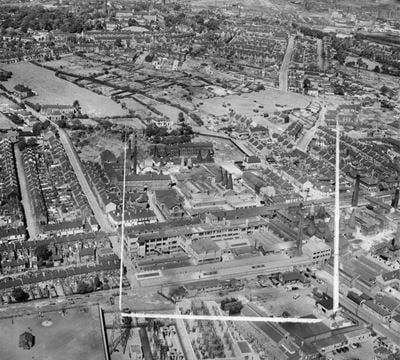
Stoke-On-Trent
The Campbell Tile Works and environs, Stoke-on-Trent, 1952
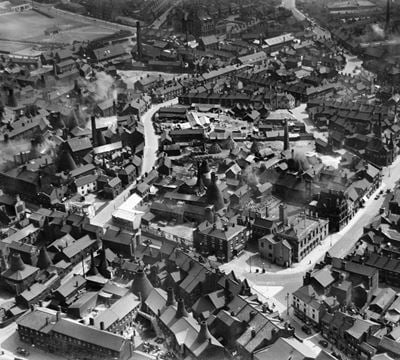
Longton
The Coronation Earthenware Works and environs, Longton, 1937
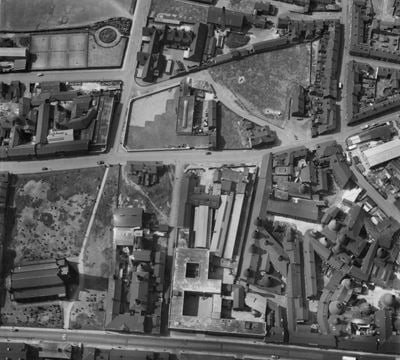
Longton
The Taylor Tunnicliff & Co Ltd Works on Normacot Road and environs, Longton, 1953
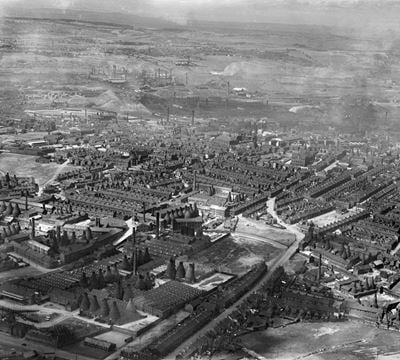
Hanley
Trent Sanitary Works and environs, Hanley, 1931
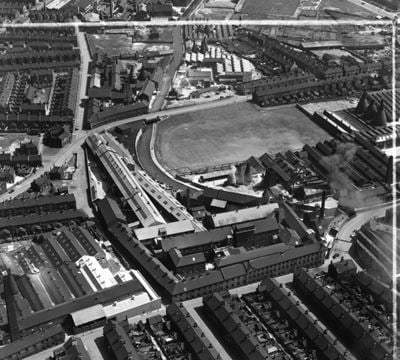
Hanley
The Hanely Pottery (Earthenware) and environs, Hanley, 1951
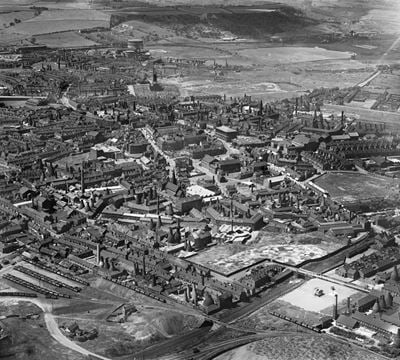
Burslem
The Royal Doulton Works and environs, Burslem, 1931
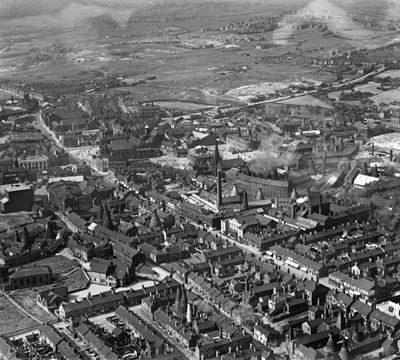
Burslem
The T and R Boote Ltd Potteries and Manufactory, Burslem, 1934
Stoke-on-Trent in the Historic England Archive
The Historic England Archive cares for over 15 million images, dating from the 1850s to the present day. Discover stunning images of Stoke-on-Trent's past. Skip this section and go to stories about heritage
Eileen ‘Dusty’ Deste Collection
Longton, Stoke-On-Trent, City Of Stoke-On-Trent
Date created: 1965 - 1968
The buidlings of Willow Pottery viewed from Normacott Road with Bank Works visible in the background
Eric de Mare
Stoke On Trent, City Of Stoke-On-Trent, City Of Stoke-On-Trent
Date created: 1945 - 1980
General view of an unidentified site in Stoke on Trent showing a kiln.
John Gay Collection: Modern Architects
Hanley, City Of Stoke-On-Trent, City Of Stoke-On-Trent
Date created: Apr 1982
Photograph of an architects scale model of the proposed market forecourt at the Hanley centre in the Market Square, Stoke on Trent
John Laing Collection
Newcastle-Under-Lyme, Staffordshire
Date created: 25 Aug 1971
Earth moving vehicles at work during the construction of a section of the Potteries D Road on the A500
Nigel Temple Collection of Postcards of Parks and Gardens
Longton, City Of Stoke-On-Trent, City Of Stoke-On-Trent
Date created: 1923 - 1928
GENERAL VIEW
Margaret Tomlinson Collection
City Of Stoke-On-Trent
Date created: circa 1961
The exterior of the former Grapes Hotel public house at the junction of Campbell Place and Church Street showing 'SOLD' signs as well as a sign for 'G.
Eileen ‘Dusty’ Deste Collection
Longton, Stoke-On-Trent, City Of Stoke-On-Trent
Date created: 1965 - 1968
The exterior of numbers 21 and 23 Short Street showing windows boarded
Eric de Mare
Stoke On Trent, City Of Stoke-On-Trent, City Of Stoke-On-Trent
Date created: 1945 - 1980
General view of an unidentified site in Stoke on Trent showing a pottery kiln and ancillary buildings.
John Gay Collection: Modern Architects
Hanley, City Of Stoke-On-Trent, City Of Stoke-On-Trent
Date created: Apr 1982
Photograph of an architects scale model of the proposed market forecourt at the Hanley centre in the Market Square, Stoke on Trent
John Laing Collection
Newcastle-Under-Lyme, Staffordshire
Date created: 17 Jun 1971
A view of a section of the Potteries D Road on the A500 during construction, showing earth moving in progress
Nigel Temple Collection of Postcards of Parks and Gardens
City Of Stoke-On-Trent
Date created: 01 Jan 1900 - 15 Aug 1910
GENERAL VIEW SHOWING BOATS ON LAKE
Margaret Tomlinson Collection
Tunstall, Stoke-On-Trent, City Of Stoke-On-Trent
Date created: 1963
An alley running behind rows of houses in Harewood Street and Princess Street
Stories about heritage in your local area
Historic England publishes news, blogs, research, videos, and podcasts celebrating England's rich heritage. Discover the stories we have about Stoke-on-Trent. Skip this section and go to education
A History of Stoke-on-Trent in 8 Places
Mentions Middleport Pottery (Burgess and Leigh), Former Wedgwood Institute (Public Library), Chatterley Whitfield Colliery
Stoke-on-Trent in Staffordshire played a key role in the pottery industry for over 300 years, gaining its affectionate nickname 'The Potteries'.
10 Places with Coal Mining History
Mentions Chatterley Whitfield Colliery
Evidence of England’s coal mining heritage can still be found nationwide.
Mentions Stoke-on-Trent
Picturing High Streets was a 3-year partnership between Historic England and photography champions @photoworks_uk, who worked with 9 regional partner...
How Photography Captured England’s Changing High Streets
Picturing High Streets was a 3-year partnership between Historic England and photography champions @photoworks_uk, who worked with 9 regional partner photography organisations to create a contemporary picture of England’s high streets.
Update on Staffordshire Hoard Research
Mentions Stoke-on-Trent
Update of progress of research into the stunning Anglo-Saxon Staffordshire Hoard.
Weston-Super-Mare: the View From Above
Mentions Stoke-on-Trent
Historic aerial photographs of this Heritage Action Zone in Historic England’s Archive show Weston at war and peace.
Picturing High Streets: Over 200 Images Taken by the Public Enter Historic England Archive
Mentions Stoke-on-Trent
Documenting a year in the life of the English high street, images taken by the public as part of 'Picturing High Streets' can be viewed online.
Heritage at Risk in the Midlands Revealed
Mentions Longton Central Methodist Hall, Stoke-on-Trent
41 sites have been saved and 32 sites added to the Heritage at Risk Register 2023 in the Midlands.
Understanding the Staffordshire Hoard
Mentions Stoke-on-Trent
How 10 years of research has revealed new insights into the nation’s largest Anglo-Saxon treasure.
Historic England Launches Interactive Story Map for Schools to Celebrate the Queen’s Jubilee
Mentions Pottery Works Formerly Occupied By Dudson's Limited
A resource to educate children about their local history, highlighting important sites that the Queen has visited throughout her 70-year reign.
High Streets Heritage Action Zones’ Cultural Programme Awards £6 Million Grants
Mentions Stoke-on-Trent
Over 60 High Streets Heritage Action Zones will receive grants totalling £6 million going to local arts organisations for community-led activities.
High Streets Heritage Action Zones’ Cultural Programme Launches with 'High Street Tales'
Mentions Stoke-on-Trent
Today Historic England launches a podcast and ebook called 'High Street Tales'. These are the first events of a four-year-long cultural programme.
Grant to Help Set Up New Body to Support Metal Detectorists
Mentions Stoke-on-Trent
Historic England gives £50,000 grant to explore setting up a new training and education organisation for metal detectorists to promote best practice.
Staffordshire Hoard secrets revealed in landmark publication
Mentions Stoke-on-Trent
After a decade of research, a new book will delve into the secrets of the Staffordshire Hoard.
Struggling Historic High Streets to Benefit from £95m Funding Boost
Mentions Stoke-on-Trent
Sixty nine high streets to be given new lease of life thanks to Government fund delivered through Historic England’s successful Heritage Action Zone.
Heritage Minister Announces Historic Places to Be Revived – and They're Concentrated in the North and Midlands
Mentions Stoke-on-Trent
John Glen, Minister for Arts, Heritage and Tourism, today announced the latest historic places to be revived through the Heritage Action Zone scheme.
Stoke-on-Trent's social history through photos
Over 10,000 images from the Historic England Archive have been specially selected and re-captioned for teachers, students, and anyone who wants to learn more about their local area. Skip this section and go to grant-aided places
Wedgwood Memorial Institute, Burslem, Stoke-on-Trent, Staffordshire
Period: Victorian (1837 - 1901)
A detail of the frieze on the facade of the Wedgwood Memorial Institute on Queen Street.
Wedgwood Memorial Institute, Burslem, Stoke-on-Trent, Staffordshire
Wedgwood Institute, Queen Street, Burslem, Stoke On Trent
Period: Victorian (1837 - 1901)
A photographic copy of an architect's drawing for the Wedgwood Institute showing an elevation of the facade of the building.
Wedgwood Institute, Queen Street, Burslem, Stoke On Trent
War memorial in centre of Square, Albert Square, Stoke on Trent
Period: World War One (1914 - 1919)
This is a First World War Memorial in the centre of Albert Square. It was built in 1919, almost immediately after the war.
War memorial in centre of Square, Albert Square, Stoke on Trent
Trent and Mersey Canal Tunnel portals, Tunstall, Stoke on Trent
Period: Georgian (1714 - 1836)
This is one of a pair of canal tunnel portals. It was built in 1824-7 by Thomas Telford. It's pair was built in 1866-7.
Trent and Mersey Canal Tunnel portals, Tunstall, Stoke on Trent
Town Hall and Theatre, Wedgewood Place, Stoke On Trent
Period: Georgian (1714 - 1836)
This is the Town Hall and theatre. The central block of this building was built in 1834 by Henry Ward.
Town Hall and Theatre, Wedgewood Place, Stoke On Trent
Tombs of the Spode Family, Stoke on Trent
Period: Georgian (1714 - 1836)
The Spode family played a vital role in the development of pottery in Stoke on Trent.
Tombs of the Spode Family, Stoke on Trent
The Tontine Shops, Hanley, Stoke on Trent
Period: Victorian (1837 - 1901)
These shops were built as a butcher's market in 1837. They are built in a classical style of architecture.
The Tontine Shops, Hanley, Stoke on Trent
Tags
The Lake, Hanley Park, Stoke On Trent, Staffordshire
Period: Edwardian (1902 - 1913)
Hanley Park was opened in 1897. The lake apparently cost £2,500 to create. It was filled with water from the nearby Cauldon Canal.
The Lake, Hanley Park, Stoke On Trent, Staffordshire
Visit grant-aided places near you
These places and buildings have been helped by Historic England's financial grants. Find local heritage in your neighbourhood that you never knew existed! Please note that opening times may vary. Skip this section and go to related locations
Ford Green Hall, Ford Green Road, Stoke-on-Trent
Ford Green Hall is a timber-framed 17th-century farmhouse.
Middleport Pottery, Port Street, Middleport, Stoke on Trent, Staffordshire
These Grade II*-listed pottery works were built between 1888 and 1889 of brick and terracotta.
Discover more
Ready for more local stories? Take a look at these other places nearby

Newcastle-under-Lyme
Local Authority District
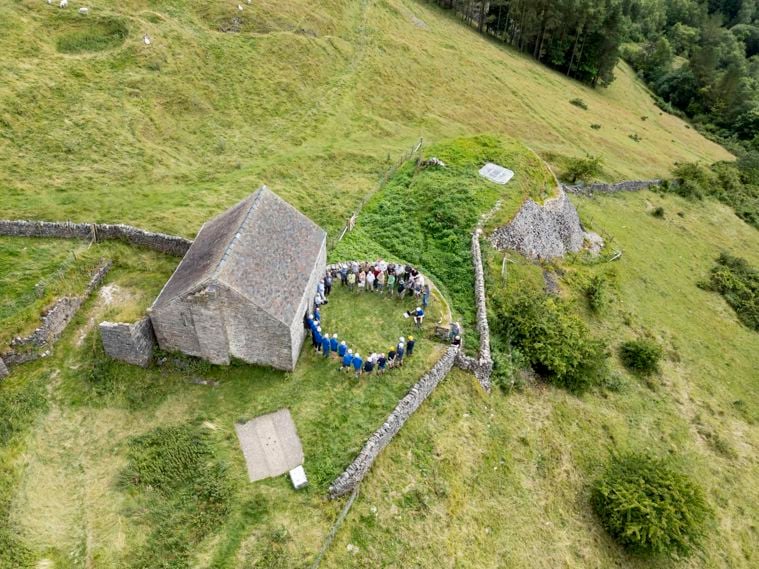
Staffordshire Moorlands
Local Authority District
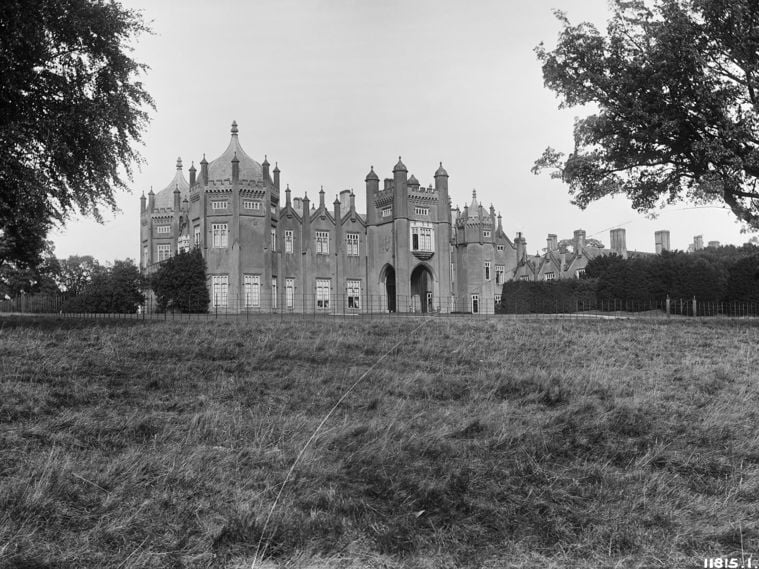
Stafford
Local Authority District